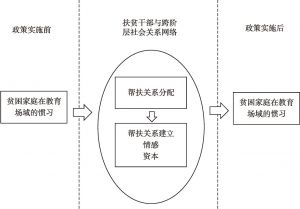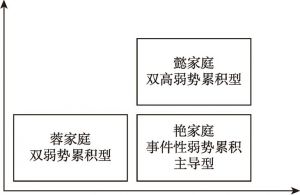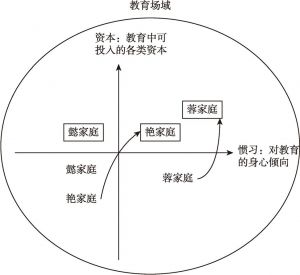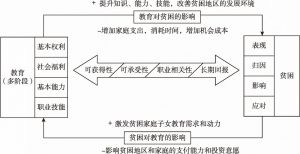章节
发展教育脱贫
检索正文关键字
章节目录
-
1 扶贫政策可以改变教育的惯习吗?
- 一 理论基础与研究框架
- (一)理论基础
- (二)研究假设与分析框架
- 二 研究方法
- (一)样本选择与数据整理
- (二)案例简介
- 三 研究结果
- (一)政策之前:贫困史与贫困家庭的教育再生产惯习
- (二)政策初立:跨阶层社会关系网络的分配机制
- (三)政策深入:跨阶层社会关系网络的形成机制
- (四)政策之后:跨阶层社会关系与贫困家庭的惯习转换机制
- 四 结论与讨论
- (一)结论
- (二)讨论
- 一 理论基础与研究框架
-
2 教育与减贫的现实障碍、基本保障与发展促进
- 一 贫困与教育的现实关系解构
- (一)教育的可获得性障碍因素
- (二)教育的可承受性障碍因素
- (三)与个人职业生涯发展的相关性障碍因素
- (四)教育投资的长期回报障碍因素
- 二 中国脱贫攻坚中教育领域精准扶贫的政策实践
- (一)针对基础设施薄弱环节,改善贫困地区办学条件
- (二)扩大资助覆盖面,构建全学段、全类型教育扶贫资助体系
- (三)着力提高贫困地区的教学质量
- (四)加大对职业教育的支持力度
- 三 脱贫攻坚中教育领域精准扶贫实践中面临的挑战
- (一)贫困地区的教育资源仍存在系统性的差距,贫困地区发展不充分和不平衡问题仍然突出
- (二)教育成本分担机制不合理,难以完全解决贫困代际传递的问题
- (三)教育回报的长期性和低效率抑制了贫困家庭和地区的投资动力
- 四 相对贫困治理目标下农村教育发展的思考
- (一)教育是应对相对贫困重要的、基础性的政策工具
- (二)坚持以人民为中心的发展理念,强化教育投资中的政府的首要责任
- (三)继续加强欠发达地区教育事业,促进教育均衡发展
- (四)把儿童早期发展和学前教育纳入国家基本社会福利体系和教育体系
- (五)重视贫困地区职业教育的发展,提升贫困劳动力市场参与能力
- (六)创新学校教育之后和之外的农民能力建设政策和机制
- 一 贫困与教育的现实关系解构
查看更多>>>












